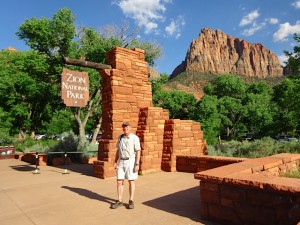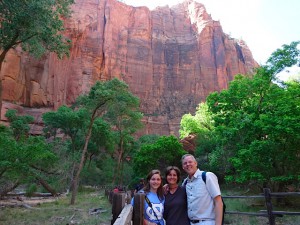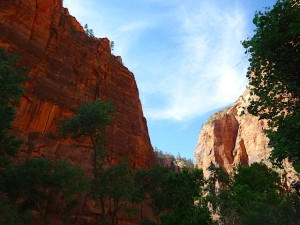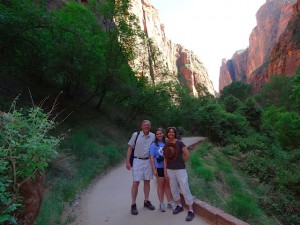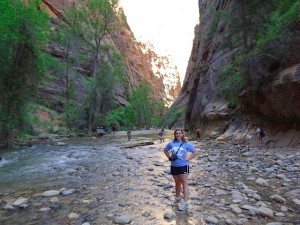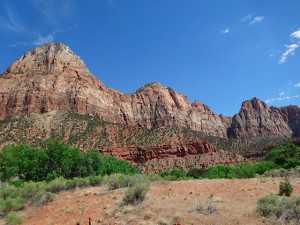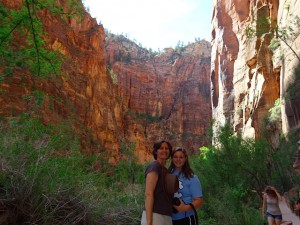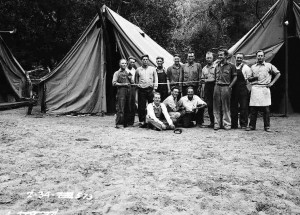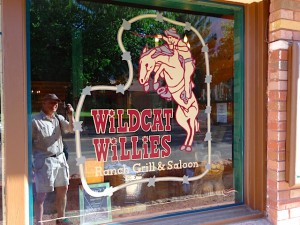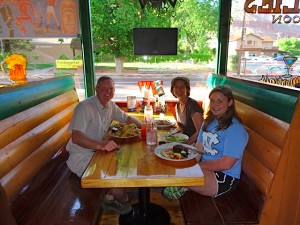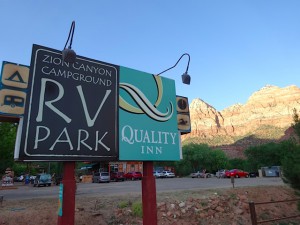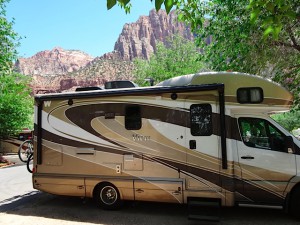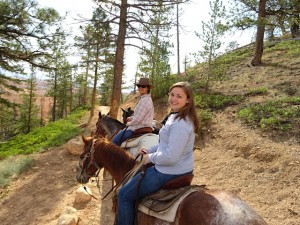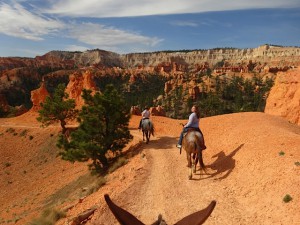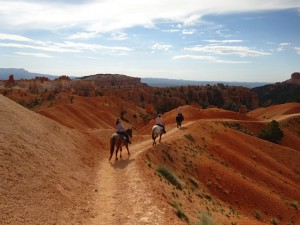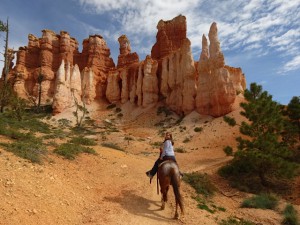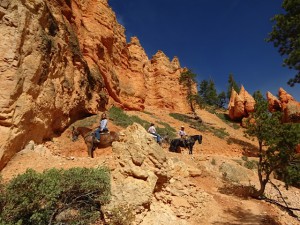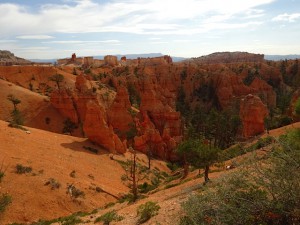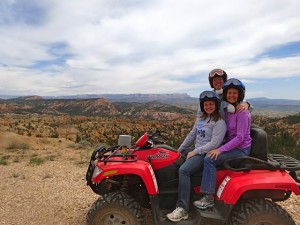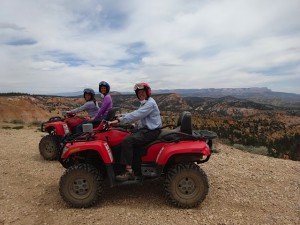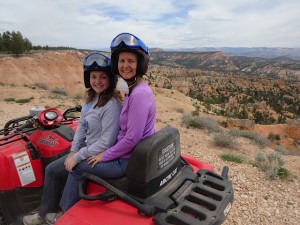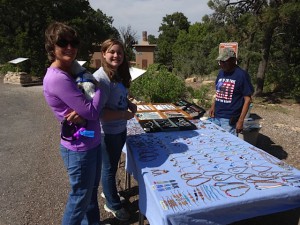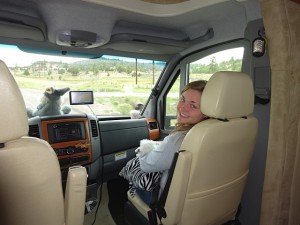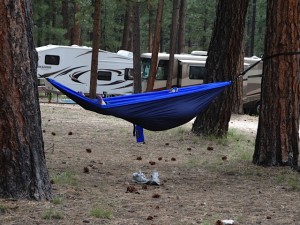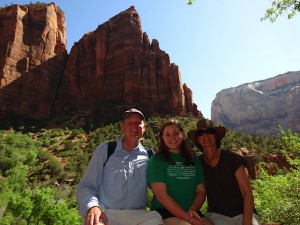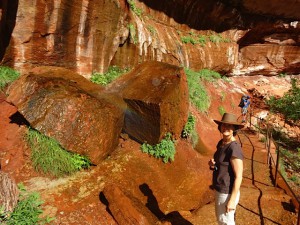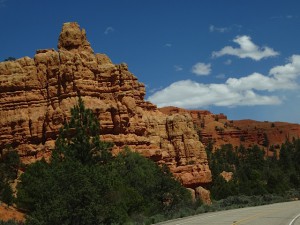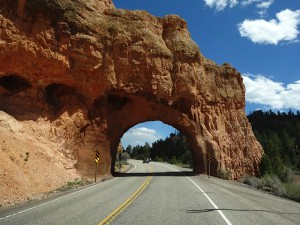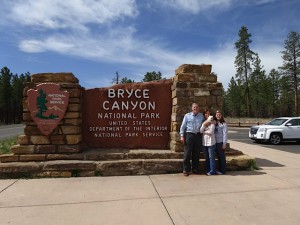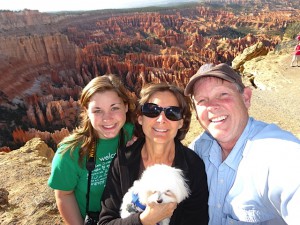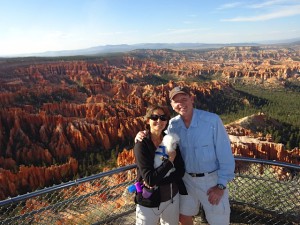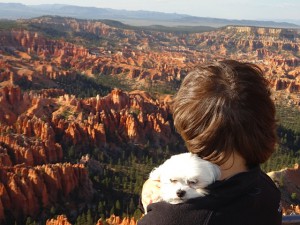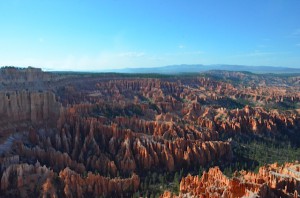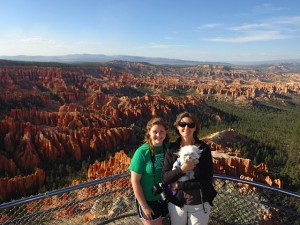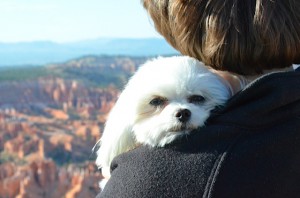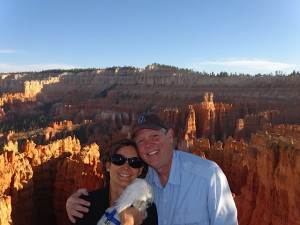163.2 RV miles today, 6,228 total
We traveled from Las Vegas into Utah to check into Zion Canyon Campground RV Resort. We felt like we were already in the park with the views we have from our campsite. We took the Zion National Park shuttle tour stopping at the most northernly stop to hike the Riverside Walk 3 miles round-trip up to the Narrows of the Virgin River (nicknamed “Wall Street”), where thousand-foot cliffs rise right out of the water and hanging gardens surrounded us, allowing us to go no further without proper water gear. We walked among these towering cliffs in this narrow canyon seeing sandstone cliffs ranging in color from cream, to pink, to red like sand castles. Zion is often said to be the most beautiful place in America. “Spectacular” is uttered time and time again as eyes raise to view the vast monoliths. Zion National Park unveils its eight layers of sandstone, displaying what has taken two-hundred-sixty million years to carve and mold. Archeologists have identified sites and artifacts from the Archaic culture, dating from about 7,000 BC to 300 BC, from Ancestral Puebloan (Anasazi) and Fremont cultures, dating from 300 BC to AD 1225, and from Southern Paiute culture, dating from AD 1250 to present day. Mormon pioneers settled in southern Utah and began farming here in the 1850s. We took the shuttle back into Springdale just outside the park and had dinner at Wildcat Willies. From Zion National Park, m, b, s & t
“I only went out for a walk and finally concluded to stay out till sundown, for going out, I found, was really going in.” –John Muir (naturalist, author, and early advocate of preservation of wilderness in the United States, 1838-1914)
“One hardly knows just how to think of it. Never before has such a naked mountain of rock entered into our minds! Without a shred of disguise its transcendent form rises preeminent. There is almost nothing to compare to it. Niagara has the beauty of energy; the Grand Canyon, of immensity; the Yellowstone, of singularity; the Yosemite, of altitude; the ocean, of power; this Great Temple, of eternity—” Frederick S. Dellenbaugh (1853-1935, Speech to introduce the nation to Zion Canyon)
